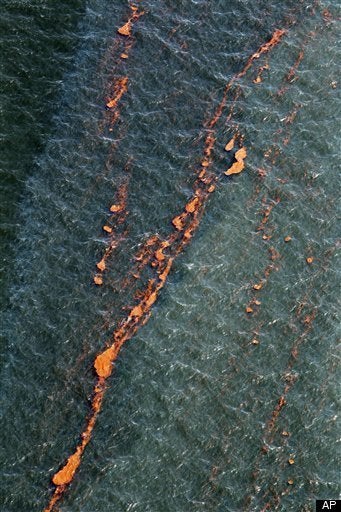
By Wallace J. Nichols, Sarah Kornfeld, Jake Dunagan and Stuart Candy
Who were the suave guys who first made the first marketing plan for the plastic age to come? It's easy to imagine an industrial-era confection sold to us by Mad Men -- slick, cynical, ambitious, and poised for ruin.
But let's look closer.
The following comes from a pioneering book, first published in 1941, envisioning the Future of Plastic.
"Plastic Man" [sic] will come into a world of colour and bright shining surfaces where childish hands find nothing to break, no sharp edges, or corners to cut or graze, no crevices to harbour dirt or germs ... The walls of his nursery, his bath ... all his toys, his cot, the moulded light perambulator in which he takes the air, the teething ring he bites, the unbreakable bottle he feeds from ... all will be plastic.
--Plastics, Yarsley & Couzens 1941, p. 154
Seventy years on, and the child dreamed up by Yarsley and Couzens in 1941 has come true. Our babies have all of their needs met by plastic. This much is certain. But whether our lives are that much safer, cleaner and better is far less clear. Our sterile, perfectly rounded, and edgeless plastic lives are not safer. In fact the opposite is true:
- People are polluted with chemicals showing up in human sperm abnormality, premature puberty, increased risk of breast cancer due to endocrine-disrupting compounds (phthalates and parabens) in skin care and shampoo products.
- Children face increased risks of cancer, reproductive disorders and concerns about brain development using baby bottles and pacifiers due to BPA.
- Plastic pollution can be found in varying amounts in every ocean basin, every beach in the world, and inside one third of endangered leatherback sea turtles.
- Plastic production has been increasing on an exponential curve for over a century, and is now around 250 Million tonnes per year, and still rising. A negligible percentage has been recycled and all of it still exists on Earth.
Was this really the future we wanted for ourselves? Were we mad? Or perhaps we were simply caught up in the momentum of an industry so exciting and full of potential that it seemed like it could single-handedly reinvent society -- which, indeed, it has. Yet Victor Emmanuel Yarsley and Edward Gordon Couzens were not Madison Avenue advertisers, but applied chemists from Britain; scientists who really believed in the beauty of the world they were helping to create through plastic: "a world in which nations are more and more independent of localized natural resources, a world in which man, like a magician, makes what he wants for almost every need, out of what is beneath him and around him: coal, water, and air." (Plastics, Yarsley & Couzens, p. 158)
We now inhabit the world we supposedly wanted then. We donʼt have to wash the dishes. (Itʼs better we throw them away?) We have plastic straws. (Those paper ones leak?) We have plastic forks and knives. (Weʼll never cut ourselves again?) Everything we wanted turns out to have a hidden cost: our dreams are biting back. This plastic age is one of ironies at every turn, now revealed as a dangerous and unsustainable vision, a failed utopia. And, over the decades, the idea of making life safer, softer, and rounded with plastics has become a total Faustian nightmare.
In order to extract ourselves from the vortex of a plastic century, we must envision a post-plastic society. But this society will have "edges". Edges represent responsibility, reality, opportunities and the mature understanding that we cannot live in a plastic bubble. Our addiction to plastic is directly related to our fear of being hurt through exposure to the "harsh realities of life".
Fear of edges led to a plastic addiction that is choking the biosphere. Itʼs time to bring back edges.
Hereʼs a simple place to start:
1. Use and reuse glass, ceramic and metal containers. Refuse plastic bottles.
2. Teach your kids to use real forks and knives - theyʼll be fine! Add a full set of real flatware to your glove box, backpack or laptop case.
3. Are you really happier with a straw? Your new mantra: "Iʼll have a glass of tap water please. No ice, no straw, thank you." Loving edges doesnʼt need to mean being edgy.
4. Donʼt order collagen or silicone implants. Your evolving natural edges are most beautiful.
For the future of our planet, for the chance to live in a post-plastic society, let's reclaim our world and its edges from the Mad Men, scientists or not. Letʼs all meet in that world where we are not "Plastic People", but human beings, alive, and unafraid.
Wallace J. Nichols, Sarah Kornfeld, Jake Dunagan, and Stuart Candy, are a hybrid art- science-futures collaboration. Their installation Plastic Century is an interactive installation created for the California Academy of Sciences that explores the relationship between plastic, people, and the environment over the 100 years since the birth of Jacques Cousteau. The installation will be at the California Academy of Sciences June 3rd and June 10th. The Plastic Century Team is currently in residency at the Gray Area Foundation for the Arts (GAFFTA), in San Francisco.